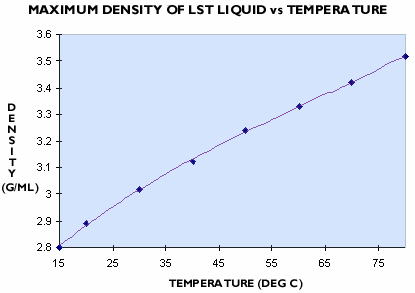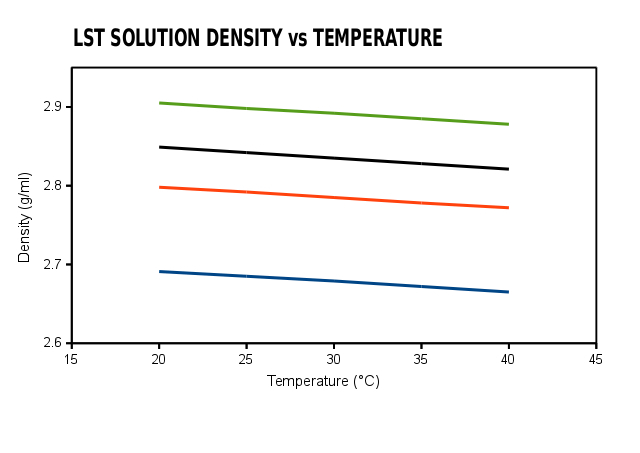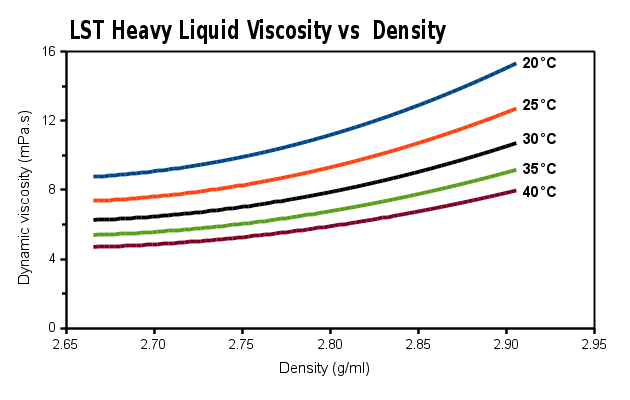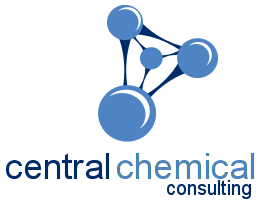LST Heavy Liquid for density separations
Physical Characteristics of LST Heavy Liquid
LST solids contain lithium heteropolytungstates in the form of extremely soluble, colourless hydrated crystals. Concentrated aqueous solutions of LST form colourless or pale yellow heavy liquids. LST Heavy Liquid is normally used with an aqueous base. However, the LST crystals are also highly soluble in acetone and alcohols, and can form dense liquids in these organic solvents. This provides a range of methods for the use and recycling of LST Heavy Liquids.
Thermal Stability of LST Heavy Liquid
LST Heavy Liquid maintained at a temperature of 140°C for over two weeks showed no observable change. The high thermal stability of LST Heavy Liquid allows it to be boiled to evaporate water and regain its original high density. The stability of LST Heavy Liquid means that recycling is rapid, simple and effective.
Operating Density of LST Heavy Liquid
At 25°C LST Heavy Liquid can be used at any density up to 2.95 g/ml by diluting with water or by concentrating to remove water. The recommended operating density as a replacement for bromoform is 2.85 g/ml. At this density the viscosity is low, and the likelihood of crystallisation is reduced. Densities up to 3.6 g/ml can be achieved at higher temperatures. The maximum density of LST Heavy Liquids is given for a range of temperatures in the Figure below

A small change in the density of LST solutions with SG 2.7 to 2.9 g/ml occurs with temperature (see Figure below).

Viscosity of LST Heavy Liquid
Low viscosity is a feature of LST Heavy Liquid. Grain separations in LST Heavy Liquid occur at about the same speed as when using TBE, but without the occupational hygiene risk of organohalides. The exact viscosity of the LST Heavy Liquid will vary with its temperature and density (see Figure below), and is typically about 11 cP.


